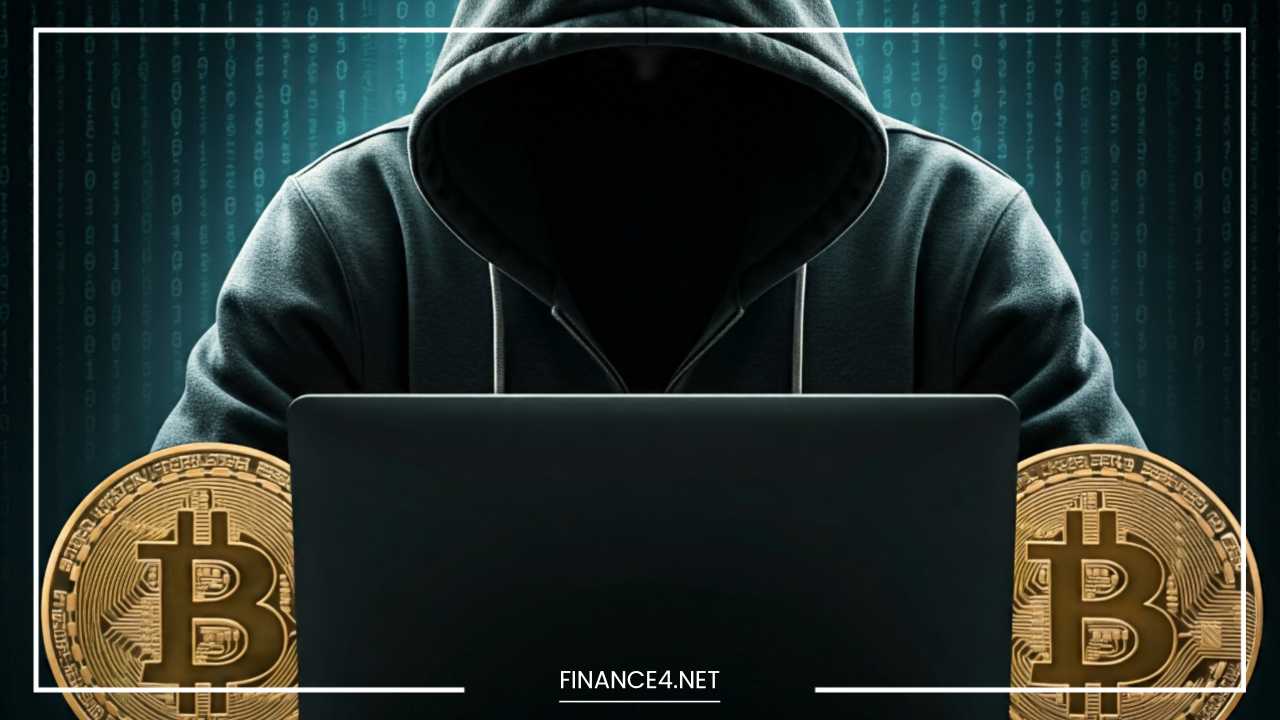The Largest Cryptocurrency Hacks So Far

Cryptocurrency Hacks
Top Cryptocurrency Hacks: The Largest Breaches in History
The world of cryptocurrency is both exhilarating and precarious, characterized by groundbreaking technologies and significant risks.
The digital asset space has witnessed dramatic events, with hacks and thefts standing out as particularly severe disruptions.
These breaches have not only resulted in substantial financial losses but have also sparked intense scrutiny regarding the security and reliability of the crypto ecosystem.
In this comprehensive examination, we delve into some of the largest and most impactful cryptocurrency hacks, analyzing their causes, consequences, and the lessons learned to safeguard the future of digital finance.
The Mt. Gox Hack: A Watershed Moment in Crypto History
The Mt. Gox hack of 2014 is often regarded as a watershed moment in cryptocurrency history. Mt. Gox, which was founded in 2010 and originally a trading platform for Magic: The Gathering cards, evolved into the world’s largest Bitcoin exchange.
By 2013, Mt. Gox was handling approximately 70% of all Bitcoin transactions globally. However, its dominance made it a prime target for cybercriminals.
In February 2014, Mt. Gox abruptly suspended trading, citing a “huge” security breach. The company filed for bankruptcy protection shortly afterward, revealing that approximately 850,000 Bitcoins—worth between $340 million and $850 million at the time of the theft—had been stolen.
This breach had devastating consequences for the Bitcoin market. Bitcoin’s price plummeted from around $1,000 to as low as $200, shaking investor confidence and highlighting severe vulnerabilities in the security infrastructure of cryptocurrency exchanges.
The investigation into the Mt. Gox hack revealed several security shortcomings. For instance, Mt. Gox had failed to implement basic security practices, such as encryption and regular security updates.
The exchange’s wallet management was particularly flawed; much of the stolen Bitcoin was stored in a hot wallet—a digital wallet connected to the internet—which is far more vulnerable to attacks than cold storage solutions, which are offline and thus more secure.
The fallout from the Mt. Gox incident was substantial. It prompted a reevaluation of security protocols across the cryptocurrency industry and catalyzed regulatory bodies to start considering frameworks to govern the rapidly evolving digital asset space.
The hack underscored the need for exchanges to adopt stringent security measures and to ensure that their infrastructure could withstand sophisticated cyber attacks.
The Ronin Network Hack: A Gaming Platform Breach with Far-Reaching Consequences
On March 23, 2022, the Ronin Network, an Ethereum sidechain designed to facilitate transactions for the popular blockchain-based game Axie Infinity, experienced a massive security breach.
This attack stands as one of the largest known thefts involving decentralized finance (DeFi) protocols, with the hackers absconding with an estimated $625 million worth of Ethereum and USDC.
The Ronin Network was specifically designed to enhance the scalability and efficiency of transactions for Axie Infinity, which has become one of the most well-known play-to-earn games in the crypto space.
The breach occurred due to vulnerabilities in the network’s validator nodes. Validators are entities responsible for confirming transactions and securing the network.
The attackers managed to compromise four out of the nine validator nodes, allowing them to execute fraudulent transactions and transfer the stolen assets to their wallets.
The Ronin Network hack exposed several critical issues related to decentralized platforms. It highlighted the need for robust security measures in validating systems and the potential risks associated with cross-chain bridges.
The breach led to a temporary halt in Axie Infinity operations and caused a significant drop in the value of the Ronin token (RON), impacting both players and investors.
In response, the Ronin Network team, in collaboration with the broader crypto community, undertook significant efforts to address the vulnerabilities and improve security measures.
This incident emphasized the importance of securing not just the individual components of a blockchain ecosystem but also the network as a whole.
It also illustrated the growing pains of the DeFi sector as it continues to evolve and attract substantial financial activity.
The Poly Network Hack: A Unique Case of Theft and Redemption
The Poly Network hack of August 2021 is notable for its unique resolution. The Poly Network, a cross-chain protocol facilitating transactions between different blockchains, experienced a severe security breach when hackers exploited vulnerabilities in its smart contracts.
The attack resulted in the theft of approximately $611 million worth of cryptocurrencies, including Ethereum, Binance Coin, and Tether.
What distinguishes this incident is the hacker’s unexpected decision to return the majority of the stolen funds. Initially, the Poly Network team was faced with the daunting task of recovering the stolen assets.
However, after public appeals and communication with the hackers, the attackers—who had maintained anonymity—began to return the stolen funds.
By the end of August, over $260 million had been returned, and the majority of the assets were eventually recovered.
The Poly Network hack highlighted several key aspects of the cryptocurrency space. First, it underscored the need for rigorous smart contract security.
The vulnerability exploited by the hackers was related to a flaw in the network’s smart contract logic, emphasizing the importance of comprehensive code audits and testing in preventing such attacks.
Second, the return of the stolen funds showcased the potential for ethical behavior within the crypto community. The hackers’ decision to return the funds was influenced by the Poly Network team’s appeals and the broader community’s response.
This incident demonstrated that even in the face of cybercrime, there can be avenues for resolution and restitution.
The FTX Collapse: A Man-Made Disaster Shaking the Crypto Market
While not a hack in the traditional sense, the collapse of the cryptocurrency exchange FTX in November 2022 represents a significant disruption within the crypto industry.
Founded by Sam Bankman-Fried, FTX quickly emerged as one of the leading cryptocurrency exchanges, offering a wide range of trading products and services. However, the company’s downfall was precipitated by allegations of fraud and financial misconduct.
Reports revealed that Sam Bankman-Fried and his associates had misused customer funds, engaging in risky investments and personal expenditures.
The lack of transparency and oversight led to a loss of confidence among investors and users. As the details of the mismanagement and fraudulent activities unfolded, FTX’s financial instability became apparent, resulting in the company’s bankruptcy.
The FTX collapse had far-reaching consequences for the cryptocurrency market. It not only led to billions of dollars in losses but also contributed to a broader decline in market prices and investor confidence.
The incident underscored the inherent risks associated with centralized exchanges and highlighted the need for regulatory oversight and transparency.
In the aftermath of the FTX collapse, there has been increased scrutiny of centralized exchanges and their practices.
The incident has prompted discussions about the need for clearer regulatory frameworks to ensure that exchanges operate with transparency and accountability.
Additionally, it has spurred calls for greater investor protection and more robust risk management practices within the cryptocurrency industry.
Other Notable Hacks and Their Implications
In addition to the major hacks discussed, several other notable incidents have significantly impacted the cryptocurrency landscape. These include:
- Binance BNB Bridge Hack (October 2021): In October 2021, hackers exploited a vulnerability in the Binance Smart Chain, leading to the theft of $569 million worth of BNB tokens. The attack highlighted the risks associated with cross-chain bridges and the need for enhanced security measures in these critical infrastructure components. Cross-chain bridges are designed to facilitate transactions between different blockchain networks, but their complexity can introduce vulnerabilities that are susceptible to exploitation.
- Coincheck Hack (January 2018): The Japanese exchange Coincheck experienced a major security breach in January 2018, resulting in the theft of $532 million worth of NEM tokens. The hack was attributed to the exchange’s inadequate security measures, including a lack of proper cold storage for the stolen funds. This incident underscored the importance of securing digital assets and implementing robust security protocols to protect against theft.
- Wormhole Bridge Hack (February 2022): The Wormhole bridge, which facilitates interoperability between Ethereum and Solana, was attacked in February 2022, leading to the theft of $325 million worth of ETH. The attack exposed vulnerabilities in cross-chain bridges and highlighted the need for enhanced security and auditing practices in decentralized finance protocols. The Wormhole hack emphasized the importance of securing interoperability solutions, which are crucial for enabling seamless transactions between different blockchain networks.
Lessons Learned and Future Outlook
The cryptocurrency industry has gleaned several critical lessons from these high-profile hacks. Key takeaways include:
- Enhanced Security Measures: In response to the increased risk of cyber attacks, exchanges and platforms have adopted more robust security measures. This includes implementing multi-factor authentication, utilizing cold storage solutions, and conducting regular security audits. The emphasis on security has grown, with many organizations investing in advanced threat detection and mitigation technologies to protect their systems and users.
- Improved Smart Contract Security: The importance of secure smart contract development has become evident, with a growing focus on rigorous code audits and testing. Projects are now more aware of the risks associated with smart contract vulnerabilities and are implementing best practices to minimize these risks. This includes employing formal verification methods to ensure the correctness and security of smart contract code.
- Regulatory Oversight: The need for stronger regulatory frameworks has become increasingly apparent, particularly in light of incidents like the FTX collapse. Regulators are scrutinizing cryptocurrency exchanges and DeFi platforms to ensure compliance with financial regulations and to protect investors from fraud and misconduct. There is a growing recognition of the need for clear and comprehensive regulations to address the challenges and risks associated with digital assets.
- User Vigilance: Users are encouraged to be more vigilant in safeguarding their digital assets. This includes using reputable exchanges, employing secure storage solutions, and staying informed about potential security threats. Education and awareness play a crucial role in mitigating the risks associated with cryptocurrency investments. Users should also be cautious of phishing scams and other social engineering attacks that can compromise their security.
- Community Engagement: The role of community engagement in resolving security incidents has been highlighted by cases like the Poly Network hack. Open communication and collaboration between stakeholders can lead to positive outcomes, even in the face of cybercrime. The cryptocurrency community has demonstrated its ability to come together to address challenges and support affected parties.
As the cryptocurrency industry continues to evolve, addressing the challenges posed by cybercrime remains a priority.
The rapid advancement of technology and the emergence of new financial products present ongoing security challenges.
By learning from past mistakes and implementing effective security measures, the industry can work towards building a more resilient and trustworthy ecosystem.
The future of cryptocurrency will likely involve continued innovation in security practices, regulatory frameworks, and user education.
As the market matures, it is essential to address the evolving risks and challenges to ensure the long-term success and stability of the digital asset ecosystem.
In conclusion, the largest cryptocurrency hacks in history have underscored the vulnerabilities inherent in digital assets and the need for continuous improvement in security practices.
The industry has made significant strides in enhancing security, but the threat landscape continues to evolve. By staying informed and proactive, users, developers, and regulators can contribute to a safer and more secure cryptocurrency environment for all.



